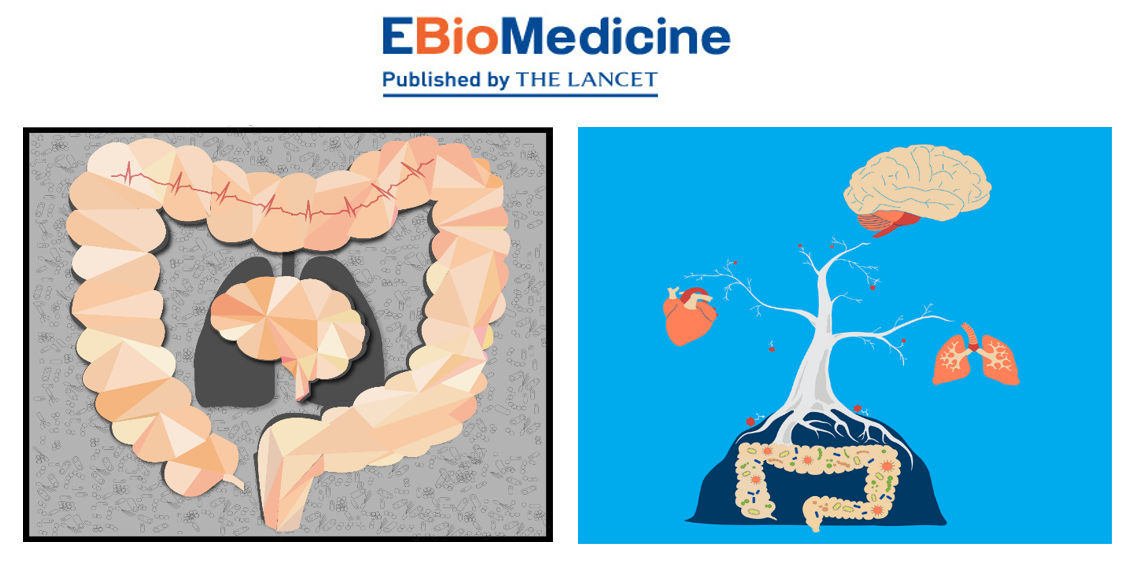EBioMedicine Cover Art

Research led by Dr. Karen O’Connor, Dr. Eric Lucking, Prof. John Cryan and Prof. Ken O’Halloran published in EBioMedicine was highlighted by banner images on the journal website in two different issues of the journal.
The first paper examines the role of the microbiome on breathing and blood pressure in a unique animal model of sleep apnoea titled “Chronic intermittent hypoxia disrupts cardiorespiratory homeostasis and gut microbiota composition in adult male guinea-pigs”. Lucking, O’Connor et al. EBioMedicine. 2018 Dec;38:191-205.
This publication presents evidence that the carotid bodies are obligatory for the development of hypertension in animals exposed to chronic intermittent hypoxia. However, exposure to chronic intermittent hypoxia alters the gut microbiota as well as brainstem neurochemistry, autonomic control of heart rate, and breathing. This body of research supports the growing literature revealing that the microbiota-gut-brain axis plays a critical role in the maintenance of multiple homeostatic systems.
The second paper in this series explores the role of microbiota manipulation on cardiorespiratory control, titled “Manipulation of gut microbiota blunts the ventilatory response to
hypercapnia in adult rats”. O’Connor, Lucking et al. EBioMedicine. 2019 Jun;44:618-638.
The principal outcome of this publication is that disruption of the microbiome via either antibiotic intervention or faecal microbiota transfer alters brainstem neurochemistry and depresses ventilation during hypercapnic stress. The paper reveals the capacity for disruptions to the gut microbiota to affect cardiorespiratory homeostasis.
Physiology Department
Fiseolaíocht
Contact us
Western Gateway Building Western Road University College Cork
